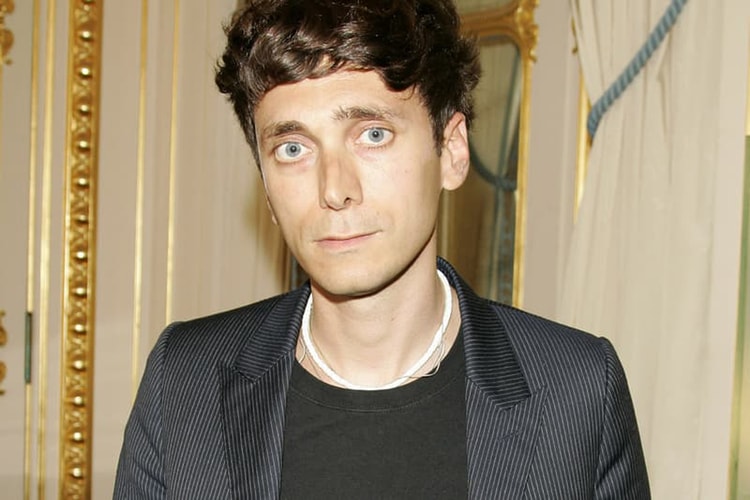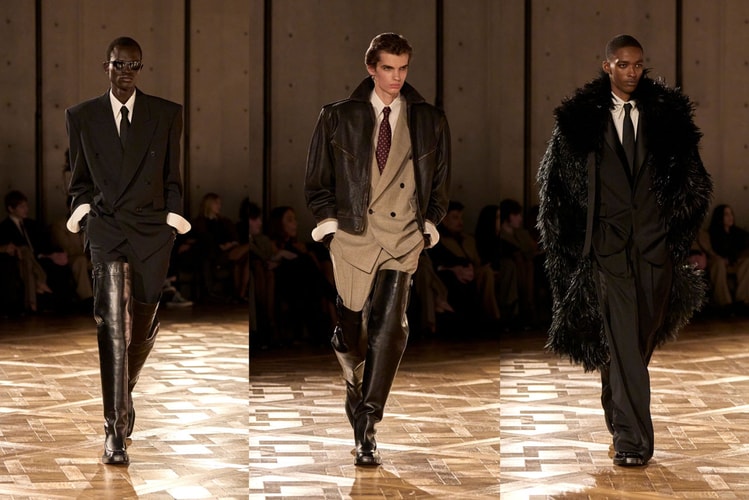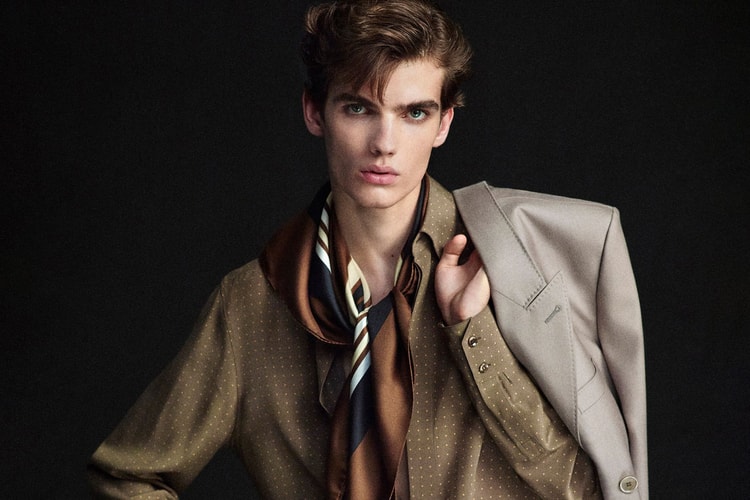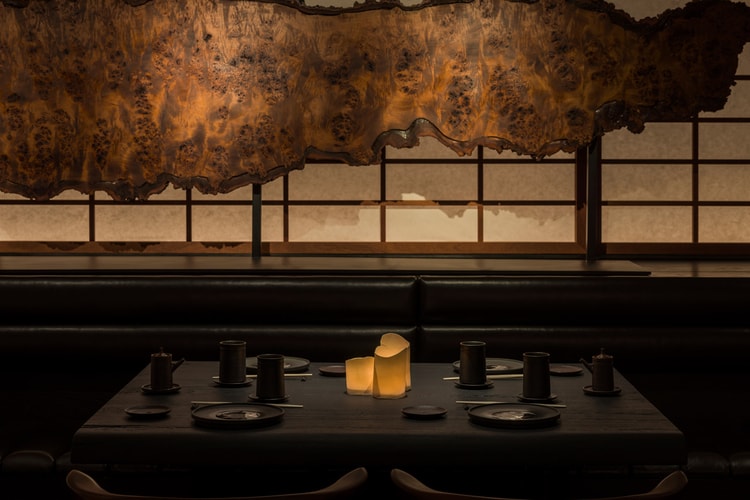Hedi Slimane Finally Speaks on the Saint Laurent Rebranding
The French creative director tells all in an exclusive new interview with ‘Yahoo! Style.’
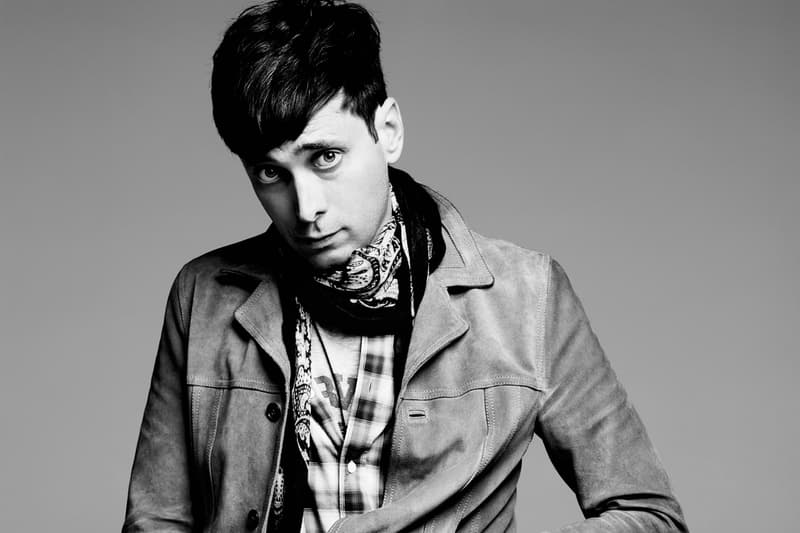
Despite the high profile of the brand he creatively directs – historic French fashion house Saint Laurent – Hedi Slimane remains notoriously reserved when it comes to press. Perhaps this traces back to his personality as a photographer, where Slimane artfully portrays his subjects from behind-the-lens. Whatever the reason, Slimane has broken the silence in a new interview with Yahoo! Style. The interview comes ahead of Saint Laurent’s reintroduction of couture design to the fold, and also coincides with a beautiful new Paris headquarters – both of which represent another injection of youthful energy to the house name. In the conversation – conducted with Yahoo! Style’s Dirk Standen via email – Slimane opens the floodgates on a variety of subjects, including his strategy for Saint Laurent this year and beyond, his personal experiences with homophobia and bullying, his love affair with Los Angeles, and more. Check out an extended excerpt from the pivotal interview below, then head on to Yahoo! Style to peruse the full conversation.
Let’s talk about that strategy, which you’ve called the “Reform Project.” What is the guiding principle behind the project?
I always start all my design projects with writing a synopsis, a perspective around the fundamentals of a House, together with my intentions or intuitions on what should be done. I conceived a First Reform project at Dior in 2000, and called it “Dior Homme.” I found this name to replace “Christian Dior Monsieur” which was a little old fashioned, and built an aesthetic around it for seven years. The reform project at Saint Laurent was done and written mainly for my team to understand what I had in mind for the house. Yves Saint Laurent needed at the time extensive reforms in order to progress on strong foundations.From the project of the new Couture House, 24 rue de l’Université, to reforming the ateliers, creating a strong tailoring, which was non existent and much needed, I had to find a new sartorial factory to produce an exclusive tailoring for the house, nothing industrial, the pure tradition in tailoring. The hand of leather accessories was heavy and had for instance to be changed in order to have a French feel. Millions of production details needed to be reviewed and corrected in order to get the right level of quality and branding, the perfect perception of what the House should produce under the Saint Laurent name. In terms of image, the entire packaging and brand identity was reformed, together with the design of an entirely new website. The first week at Saint Laurent I also designed a completely new concept for the Saint Laurent stores, a concept I keep fine-tuning according to the evolution of the house and my perception of the moment.
Finally, my photography was a significant part of the representation of the brand, as I started to work on this idea of multiple narrative campaigns, with an editorial or documentary approach, next to institutional campaigns. The reform project is therefore about the unity and consistency of all those systemic changes that were needed to comfort the progression and accuracy of the House of Yves Saint Laurent.
One of the first things you did was to rename the ready to wear simply “Saint Laurent.” At the time, some people felt that dropping “Yves” from the label was a sign of disrespect. But in fact this was merely going back to the original branding that Yves had used when he first introduced ready-to-wear. What were the intentions behind the name change?
Historically, Yves decided with Pierre in 1966 to name his revolutionary ready-to-wear “Saint Laurent Rive Gauche.“ Yves wanted a clear dichotomy with his couture, and chose Helvetica font for the new label. It was for him a distinctive sign of modernity, and a drastic change from the Couture label. In the interviews Yves gave for the launch of Saint Laurent Rive Gauche, we can feel his determination to change the format and values of Ready-to-Wear Fashion next to his Haute Couture. “Saint Laurent Rive Gauche” was an “Idea.” It was also a radical rupture. Yves wanted to dress the emerging Flower generation, which was his own generation. It was a striking period of Ready-to-Wear for both women and men. Almost fifty years after, the necessity was for me to transpose this idea, Yves’ freedom, this age of innocence. The return to the original name would also help me to recreate a legitimate and lost balance between the Fashion and leather accessories, besides keeping women’s and men’s fashion side by side. Those were the fundamentals I needed to restore, together with the progressive allure and message of the Rive Gauche, which for me was always the true spirit of Yves and Pierre.Another fundamental for Saint Laurent was somehow the evidence or desirability of the Fashion. Yves wanted his ready-to-wear to be wearable and laid back. All those concepts were quite precisely how I felt right when I came back, and probably a 360 from the context of fashion in 2012, completely absorbed by a certain formalism.
I believe the restoration of the name “Saint Laurent” was the only right thing to do, despite the irrational reactions surrounding my first year, ironically a blessing in disguise that unexpectedly gave all the publicity that was needed for my project. Naturally, I couldn’t possibly imagine that going back to the historical and most respectful roots of Yves would create such a polemic. The retro-branding for the ready to wear meant in reality protecting and preserving the name “Yves Saint Laurent “ for Couture. Rather than “dropping the Yves” the restoration of a spirit of Couture was intended a few years down the line. “Yves Saint Laurent” will be about the ateliers, the tradition, about complete luxury. It would be back when the House of Couture would be ready for it, and the ateliers “Tailleur and Flou” stronger and reformed. With the House now completed, the two names exist as they always did historically, next to the monogram designed by the artist Cassandre.



